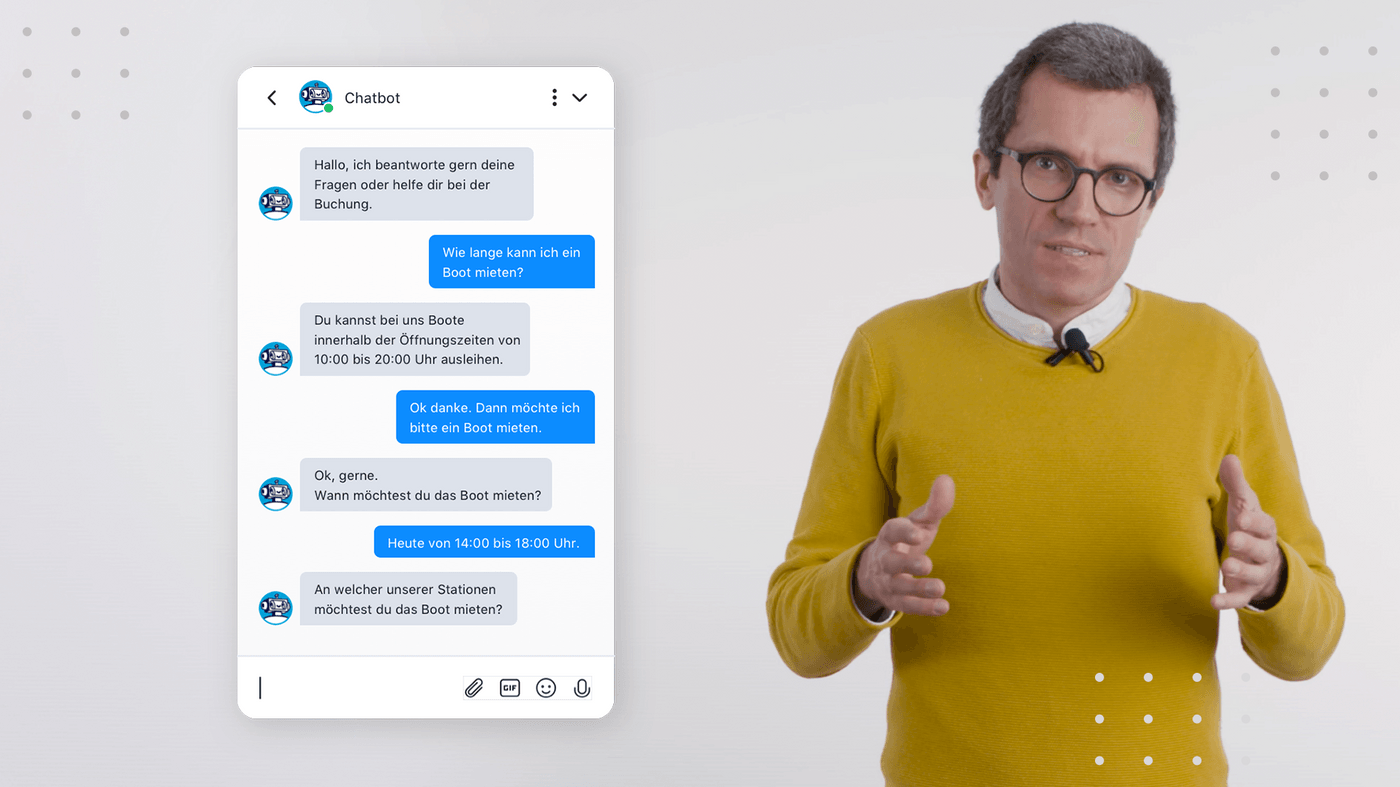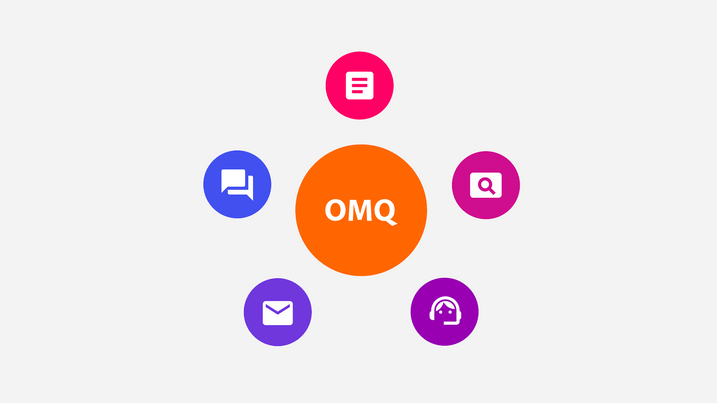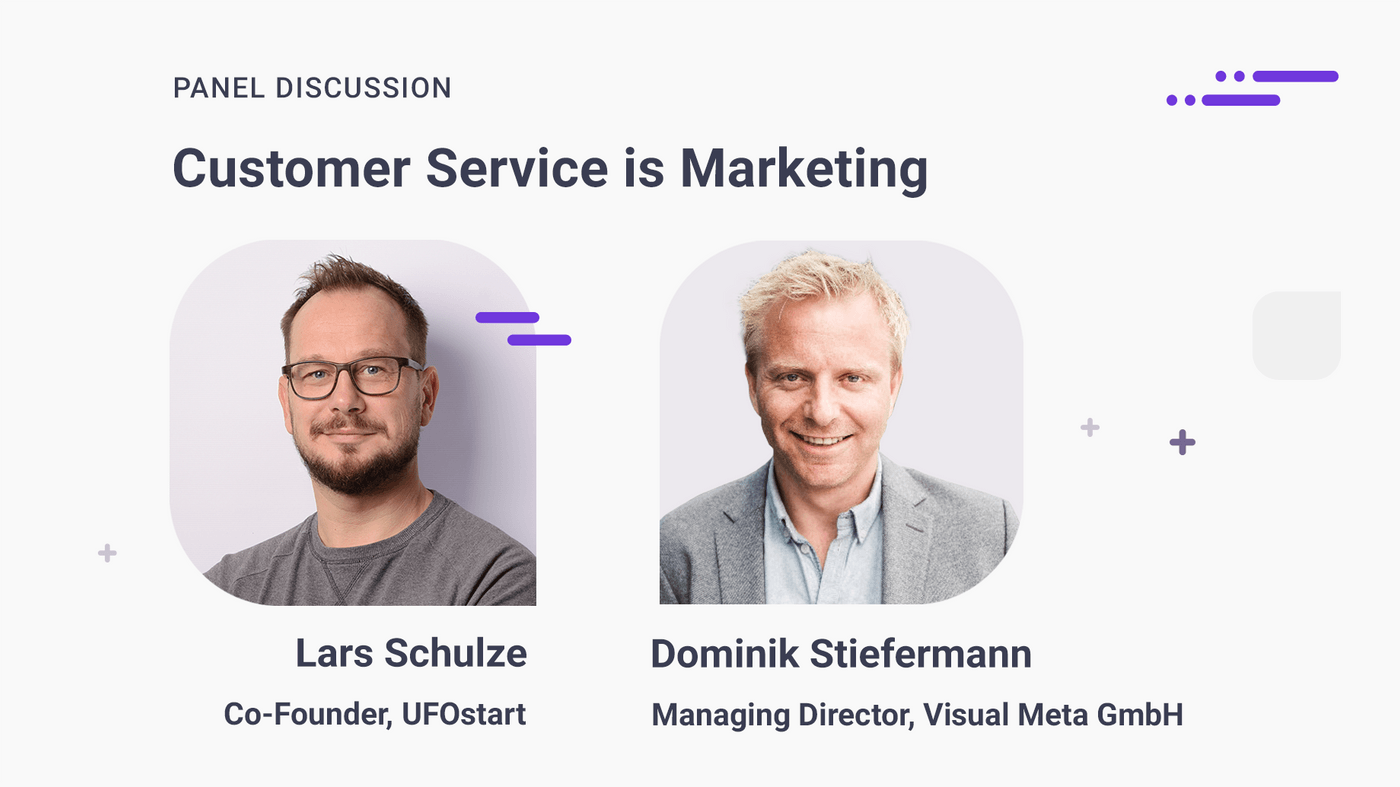Events
Keynote ai-zurich | Conversational AI in Action
OMQ uses use cases to show how various service processes can be made more efficient and automated with artificial intelligence and chatbots.

Higher customer service performance, but less effort – is that possible? Of course! Various technologies such as Artificial Intelligence and chatbots help to improve customer service. Whether customer, service staff or the entire company: everyone benefits.
Our CEO Matthias Meisdrock focuses on precisely this topic in his keynote speech at ai-zurich. In the following article we summarize his presentation for you.
The OMQ System
We offer software that responds to customer requests faster and more productively through artificial intelligence. The basic idea of our system is to teach it how to respond to a service request only once and then take over responsibility for the e-mail area, contact forms, on service pages, in call centers and in chatbot and messenger systems.
From this point on, the answering process works automatically and independently. Our central OMQ knowledge base makes information available everywhere in the system, ensuring that answers are always of the same quality. In addition, the answers are always up-to-date – no manual work is required. Our chatbot is also linked to the OMQ knowledge database.
OMQ products at a glance

OMQ Help
OMQ Help is integrated into help pages and helps customers find the right solution using a guided search. Customers enter search terms and our system predicts which next search term may theoretically be suitable for the search. Matching answers are displayed in real time, so the customer doesn’t have to search forever, but gets a solution right away.
OMQ Contact
With the integration to contact forms, customers can enter their queries in the contact form and receive the right answers, click on them and read the answer. Ideally, the problem is solved immediately and the company does not receive an additional service request that needs to be answered.
OMQ Assist
We integrate with systems such as Zendesk, Freshdesk, Salesforce, OTRS, Dixa and Greyhound and deploy OMQ Assist in service centers. With OMQ Assist, we offer a plugin that service employees can use to answer customer queries faster and easier. When a customer enquiry is opened, matching answers appear, on which the service employee can click and compile an e-mail that they send out without having to write a line at all. Besides, they don’t have to look anywhere for an answer, they just click it together.
OMQ Reply
OMQ Reply goes one step further. If the system is confident during the analysis that it can automatically respond to customer requests, an email is automatically sent without the involvement of a service representative. This allows the service to be even more relieved, because no human resources are needed at all.
OMQ Chatbot
The OMQ Chatbot can be integrated into systems such as Userlike and is able to answer customer requests in chat systems and messengers such as WhatsApp and Facebook Messenger.
Our experiences and customers
We help companies such as Tchibo, Norma, ETH Zurich, DB, Trade Republic and Mister Spex to make their customer service faster and more efficient. We want to share our experiences in e-commerce, transportation, insurance, banking, industry and public institutions to improve customer service. We have therefore created certain use cases through various customer projects.
Answer frequently occurring questions with the chatbot
Chatbots can be used to automatically answer frequently asked questions. A classic example of this is that someone forgot their password. A question is entered in the free text field, which the chatbot analyzes. It finds out what the client’s intention is and can automatically suggest an answer. In this case, the answer would be that the customer can create a new password by clicking on a link.

Other requests in this area include:
- Subscription or unsubscription from a newsletter
- Questions about delivery times
- Error messages
All questions that already appear in the FAQ, for example, are easier to access with the chatbot.
Simple forwarding to a service employee
The chatbot records the name and e-mail address of the customer during the chat session and sees in which area the request fits. In doing so, the customer can describe the request. When a service employee is connected to the customer, he already has all the information he needs.
He can address the customer by name, has his e-mail address and already knows the request. He can also evaluate how to handle the service request. This routing gives an expert the case.
Use Case 1: E-Commerce
In e-commerce, many service employees have to answer the same questions over and over again. Questions about orders, complaints, return periods, methods of payment and so on are increasing. Customer service should at best remind the customer of a store, i. e. offer close support. At the same time, however, this means that the service becomes more expensive, because agents have to be paid.
The solution is that simple cases can be answered automatically. The customer could check his order status, for example, with a chatbot on WhatsApp. He asks a question, gets an answer immediately and is asked to enter his order number. He also provides his e-mail address for verification. This gives them an order status, e. g. that their parcel has been delivered to a parcel shop, and also receives a map describing their way to the parcel shop.
The customer’s data is therefore queried, forwarded to a server and converted into a request. The case is automated, no employee is involved and the customer has an immediate answer and can go straight to the shop to pick up his parcel.
Use Case 2: Transport
In the field of transport, we have customers who rent bicycles, cars or boats, for example. In our example, we are talking about a boat rental. Usually a rental happens in the following way: You search the internet for a boat rental, find one and call there. You validate with an employee whether boats of the right size and price range are available and decide where the boat needs to be picked up.
This means that large amounts of resources are consumed and the employee is unable to take care of the boats or other important activities during the time of communication. This process can be simplified by automation and many companies automate their rental business completely.
With the chatbot, this process looks like this: You can ask questions such as: “ How long can I rent a boat?” and then get a suitable answer. To “I want to rent a boat” the chatbot might reply: “ In which period?”, whereupon the customer specifies a period of time and finally asks for the desired station and number of people. Based on the data entered by the customer, the system determines that there is theoretically something available and offers to make a booking. All it needs is the name, e-mail address and telephone number of the customer – after that the booking can be made.
Through the chatbot, the request is forwarded to the system and the system asks the ticket system of the company if the boats are rentable. The customer’s data is validated by the system and returned to the chatbot. The latter then replies in the chat that the rental has been carried out. Finally, the customer receives a confirmation e-mail – all without the intervention of an employee.
Use Case 3: Human Resources
For large companies that have complex recruitment processes and multiple job advertisements on internal boards and websites, it is difficult for applicants to find the right job. There’s a lot of talk and research. Many parts can be simplified for the customer and the company by means of a job-bot.
The applicant can ask the job-bot various questions about the company and get advice, which gives him a first impression. They can also apply directly by clicking on a button provided for this purpose. He is then asked at which location he wants to apply and which entry level, i. e. how much professional experience he has.
The job-bot assembles the application and searches for which page the client can apply. He then builds up a clickable URL that leads the client directly to the appropriate job advertisement. The data is automatically transferred – so the first consultation process is over and the applicant has applied for the right position, without using up any resources.
Use Case 4: Industry
While in e-commerce it is easy to make a return, industrial plants are often installed or shipped with laborious transport and high cost. If something is broken, the product cannot simply be returned. Due to the complicated transport, employees are more likely to be on site and solve problems there. The problem is that e-mails and phone calls often fail to clarify exactly what the problem is. This is why employees often come by unprepared and have to make elaborate reorders.
The chatbot answers the customer’s questions and solves problems such as error codes. The complaint process can often be handled with few inquiries (“ Which device?”, “Is it connected?”) and the customer can be shown solutions by showing what something should look like or which switches should be pressed. If a problem is identified where a complaint makes sense, the company’s data is queried and the complaint is initiated. After that, the service employee receives a detailed report and knows exactly what to expect.
Use Case 5: Software
Our software case starts as usual: A customer reports a problem and the service trying to figure out what’s behind it and how to solve it. If a software does not work, it is often the case that the customer misdescribes the condition and the employee has to ask and check again and again. Sometimes 10-20 e-mails have to be sent back and forth to find out what the customer’s real problem is. When the software company offers a chatbot, customers are able to ask questions and get direct answers. In addition, they can query error codes with the chatbot – so you don’t have to enter into direct e-mail traffic, but the question solves automatically.
Another example is that customers’ questions on different topics, such as activation, can be answered and the software can react to different answers. “Is the current software installed? “ could be followed by “No” and the chatbot can explain how to install the new software. If the activation fails nevertheless and the customer receives an error message about e. g. incomplete license data, the chatbot can declare that the customer can make changes in the menu item X and in the submenu item XY. If there is still an error message afterwards, a service request can be made.
The service staff receive all the information they need to handle the case and can then forward it to the development department, for example, who can then find out what the problem is. This ensures more efficient work and enables the customer to: Inside, they are able to solve the problem faster on their own or are able to describe the problem so well that only a few e-mails are needed to validate it.
A simple pattern
Our use cases consist of 3 parts. The system installed on the website or the messenger accepts the customer’s input. The server then evaluates customer requests and intentions. These are finally passed on to the connector, which transfers and processes the data, and then passes it back to the system.
Do you want your customer service to become more productive?
We are happy to help you improve your customer service so that both your customers and your employees are relieved and satisfied. Not only our OMQ Chatbot helps, but also our other products, all of which are linked to our OMQ knowledge base.
If you want to know more about it, feel free to contact us or request a demo. We are looking forward to seeing you! :)



